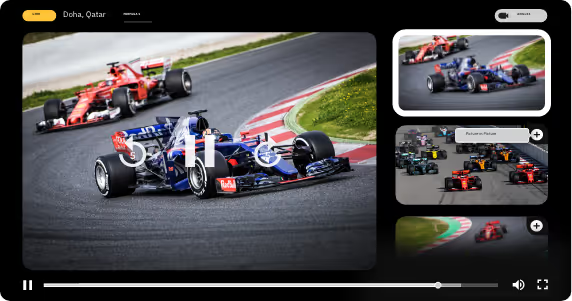Have you ever wondered how is it possible to distribute, transmit, or store thousands of hours of video content in your pocket device? Video compression formats, popularly known as “codecs”, squeeze digital video into smaller files, without sacrificing any image and audio quality.
Codecs enable Netflix to stream nearly half a million hours of content every minute1, and made it possible to connect more than 300 million daily participants on Zoom meetings in the middle of the pandemic2. So we can say, Codecs are what make digital video “go round”, even with limited bandwidth, into our favorite screens: from smart TVs to smartphones.
There are different kinds of codecs that have evolved during the last couple of decades of increasing video resolution, frame rates, special effects, etc. For many years, the Moving Picture Expert Group (MPEG) defined the codec industry by establishing royalty rates to compensate patent owners. These have extended over time to include new distribution channels. For example: in addition to a one-time device fee, per-subscriber and per-title fees have been added.
Its AVC codec – also known as H.264 – created in 2003, remains the most used video codec; mainly because it plays on almost any device, and delivers quality video streams. Over the Top (OTT) streaming platforms such as Netflix, Amazon Prime Video, and Vimeo have widely used this format.
Although, the expected growth of video streaming consumption may soon change the game. According to the “Cisco Visual Networking Index, 2017 – 2022”, video will account for 82% of all internet traffic by the end of this year. Also, the popularization of new streaming applications such as Cloud Gaming, Virtual Reality (VR), and the reduction of costs for 4K devices, increases the need for a highly effective, and cost-effective codec in the industry.
And not many device vendors and content distributors are happy to keep paying increasing royalty fees.In response, some organizations are working on developing free alternatives.
In 2013 Google released the open and royalty-free VP9 codec, which has been implemented on YouTube,Chrome and Mozilla browsers, Android devices, as well as the new iOS devices. It’s almost as compatible across devices like H.264, and highly performs with 4K video, unlike the former. These attributes have made it the codec of choosing for streaming services like Roku, and device vendors like Samsung and LG.
Two years later, in 2015Google, along with 15 other top-tech leaders organizations leaders, founded the Alliance forOpen Media to offer open, royalty-free, and interoperable solutions for the next generation of media delivery. According to its stated vision, the Alliance aims to make media technology more efficient, cost-effective and of superior quality for all users, on all devices, and on all platforms using AOM standards & tools.
The resulting codec is AV1, which is based on Google’s VP9. While Netflix, Facebook, and more are planning to move to AV1, this format still has some playback limitations which can’t be ignored, and it will take some time before AV1 hardware decoding capabilities are integrated on a mass scale. With no royalties for content distribution ensured, this seems to open to road for video streaming to keep increasing.
So, in conclusion: “what makes a codec?” …Well, if you’re streaming the newest Marvel movie, surely more than 14 million, six hundred and five data bytes.
—
1Statista (August 2021) https://www.statista.com/statistics/195140/new-user-generated-content-uploaded-by-users-per-minute/
2Statista (April 2020) https://www.statista.com/statistics/1253972/zoom-daily-meeting-participants-global/
Suggested reading

Mobii Systems and UAR Rugby Join Forces to Revolutionize Rugby with Advanced Video and Data Technologies in Three-Year Partnership

Mobii Systems Completes AWS Foundational Technical Review Milestone for Its Ultra Low-Latency Streaming Solutions

Mobii Leads the Way in Zero Latency Streaming: Join the Streaming Media Tech Talk

Mobii ultra low-latency streaming services on Microsoft Azure now available in the Azure Marketplace
Subscribe for original content and announcements.








.png)

.avif)


